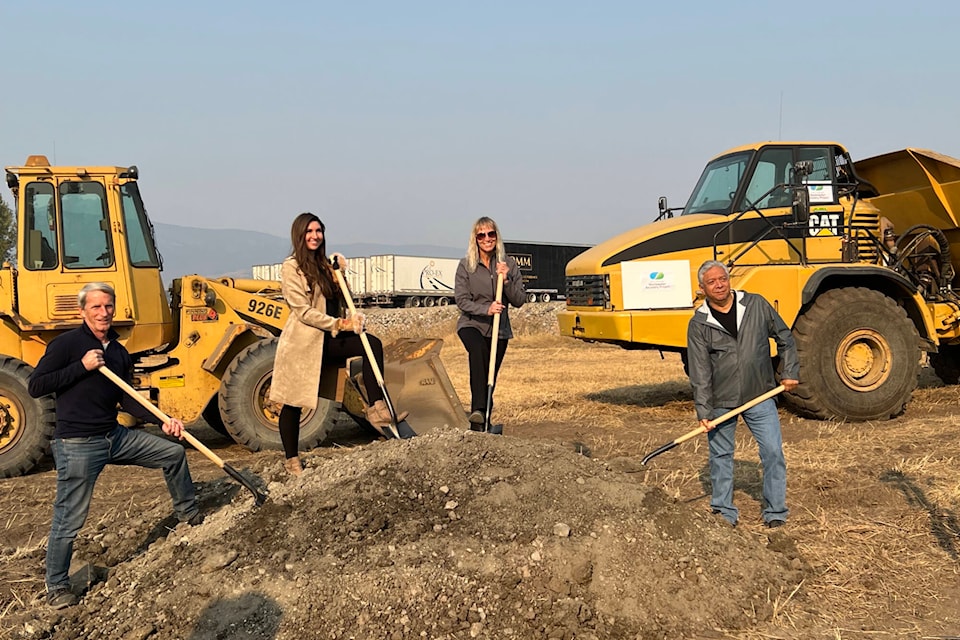Ground has broken on a $33.1 million sewer system that’s set to be a boon for the agricultural sector and residents in Spallumcheen.
The North Okanagan Wastewater Recovery project is funded by local, provincial and federal levels of government and will feature a new water treatment facility, sludge treatment system and about 12 kilometres of main pump stations. The project will run along the Swan Lake corridor north of Vernon.
The project will provide sewer service to residents and businesses in portions of the Regional District of North Okanagan (RDNO) Electoral Areas B and C and the Township of Spallumcheen’s southeast industrial area, while also having the ability to service parts of the Okanagan Indian Band (OKIB). In doing so, it will provide service to one of the last developed areas in the Okanagan without a community sewer system.
The project comes thanks to a partnership launched in 2015 between RDNO, Spallumcheen and OKIB.
At a groundbreaking ceremony Tuesday, Oct. 18, Spallumcheen Mayor Christine Fraser said the project has been seven years in the making.
“It’s super exciting, I’ve been here since the very beginning … just to have a partnership with First Nations, a regional district and a municipality over that long of a period working to this point is almost unheard of in the province. There’s only a couple of other circumstances in the province where it’s actually come to fruition as it has here,” Fraser said.
Joint venture Bird Dawson is the project manager contractor. Senior project manager Brian Carlson said they are currently going through the process of getting the project validated and will provide a report to Spallumcheen and the RDNO in the next month or so.
“Then our goal is early next year we’re going to start doing some pre-construction services and then probably by first of March we’ll be digging,” Carlson said.
The federal government has contributed nearly $13.3 million in grant funding to make the project possible. Fraser said the rest of the funding came from the provincial government.
Area B (Swan Lake-Commonage) director Bob Fleming thanked the governments for their role in bringing the project to fruition.
“It’s been a long road but without the grant from the dual level of government this project would not be taking place,” Fleming said.
“This started with the desire to improve the water quality of Swan Lake,” continued Fleming. “We knew that certainly in our area that everything was really on septic tanks, most of which were 30, 40 and 50 years old, and not all of which were functioning properly.”
Fleming said the project will be a key to improving housing availability and affordability for people in the region.
OKIB Chief Byron Louis said the project will set the stage for a more robust local economy.
“It sends a strong message that the North Okanagan is open for business and what we hope to attract is businesses that can provide clean resources, clean industries and also being able to protect the resources at the same time,” he said.
The project will also benefit local farmers. Fraser said more than 600 acres of farm land will be irrigated with the reclaimed water.
The goal is to have the project completed as early as fall 2024.
READ MORE: Spallumcheen receives funding for wastewater recovery project
READ MORE: Spallumcheen farmers thanked for ‘generous’ land donation towards Wastewater project
